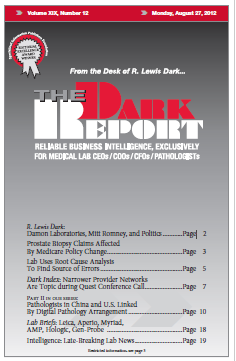CEO Summary: It is one of the first clinical collaborations of this type to be anchored by use of digital pathology. Pathologists at the medical schools of the Second Affiliated Hospital of Zhejiang University in Hangzhou, China, and the University of California Los Angeles (UCLA) are exchanging cases and sharing knowledge. During the first 18 …
Pathologists in China, U.S. Linked By Digital Pathology Read More »
To access this post, you must purchase The Dark Report.


